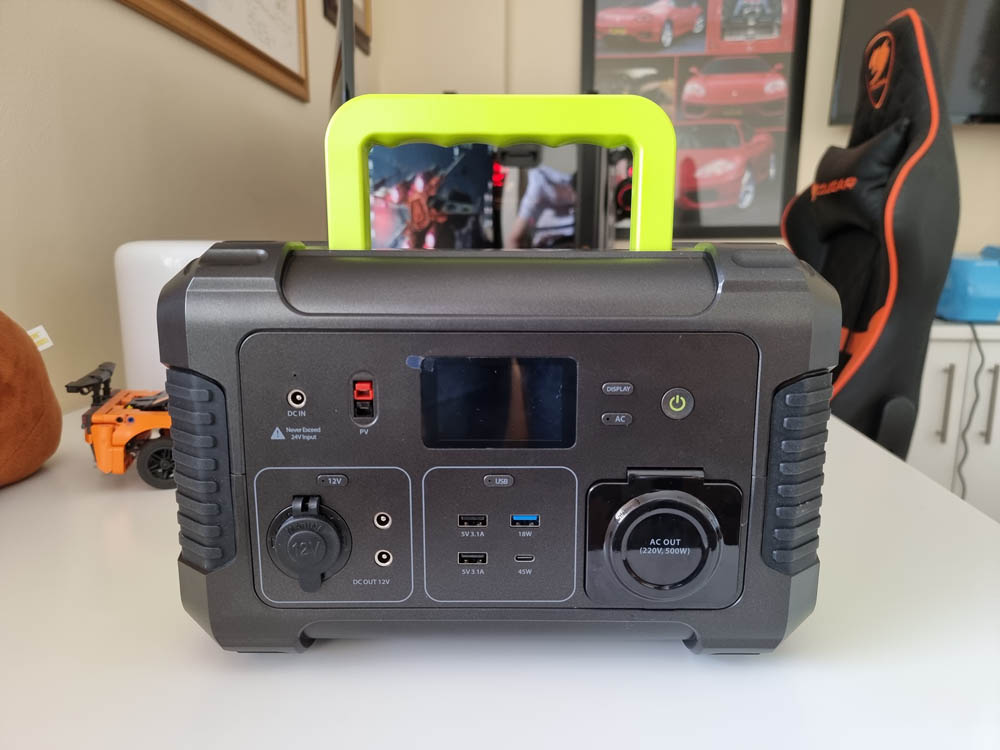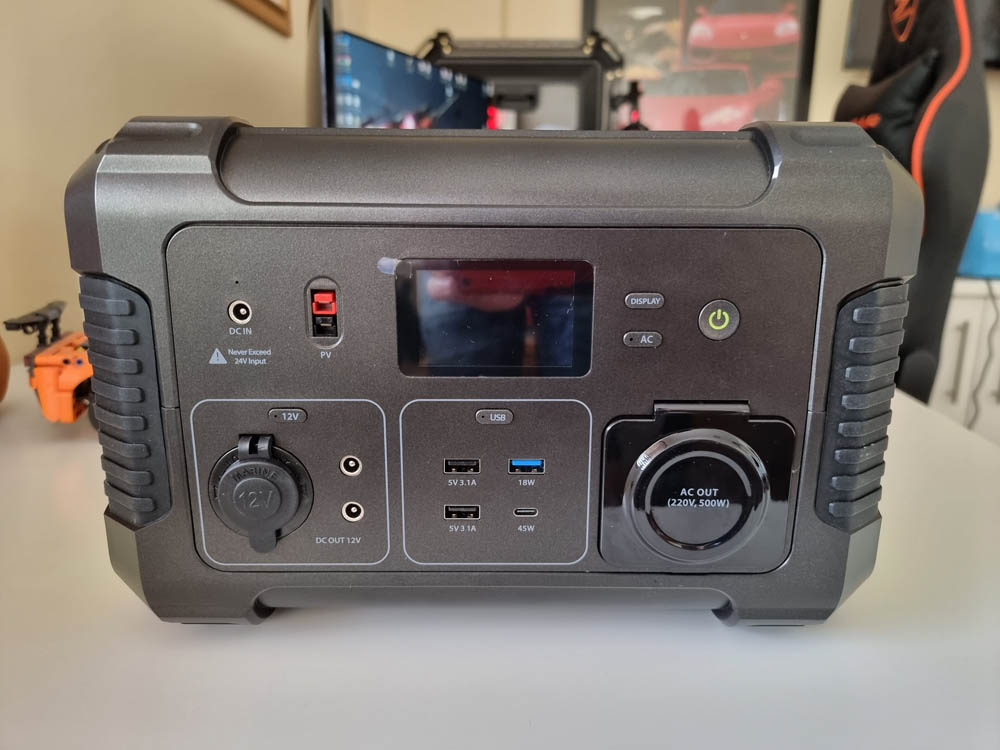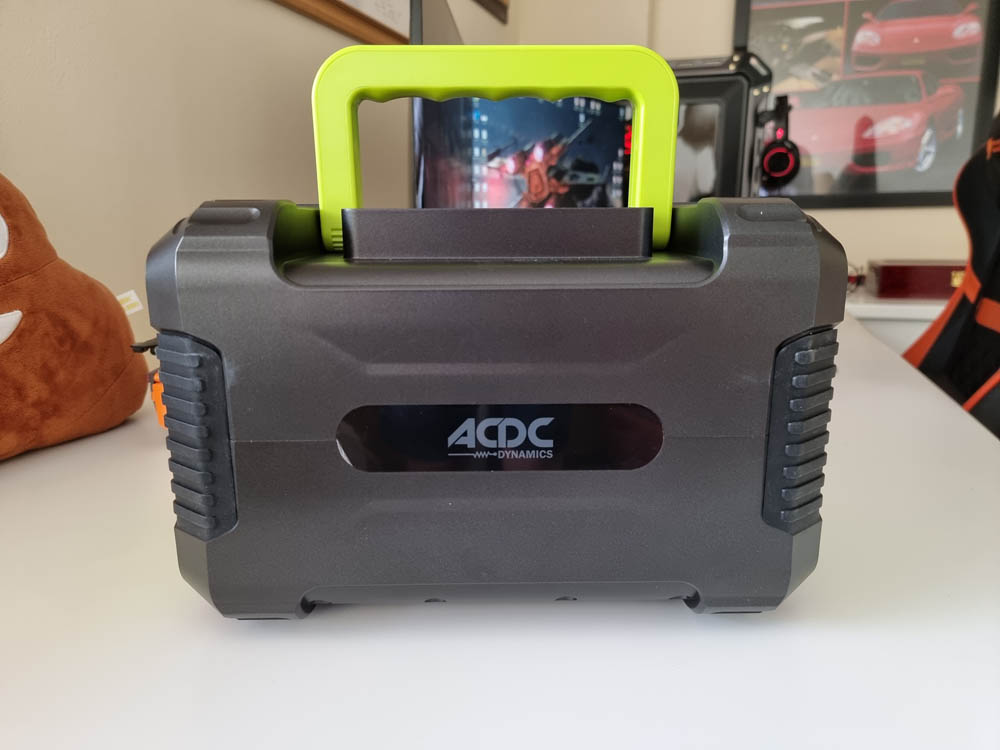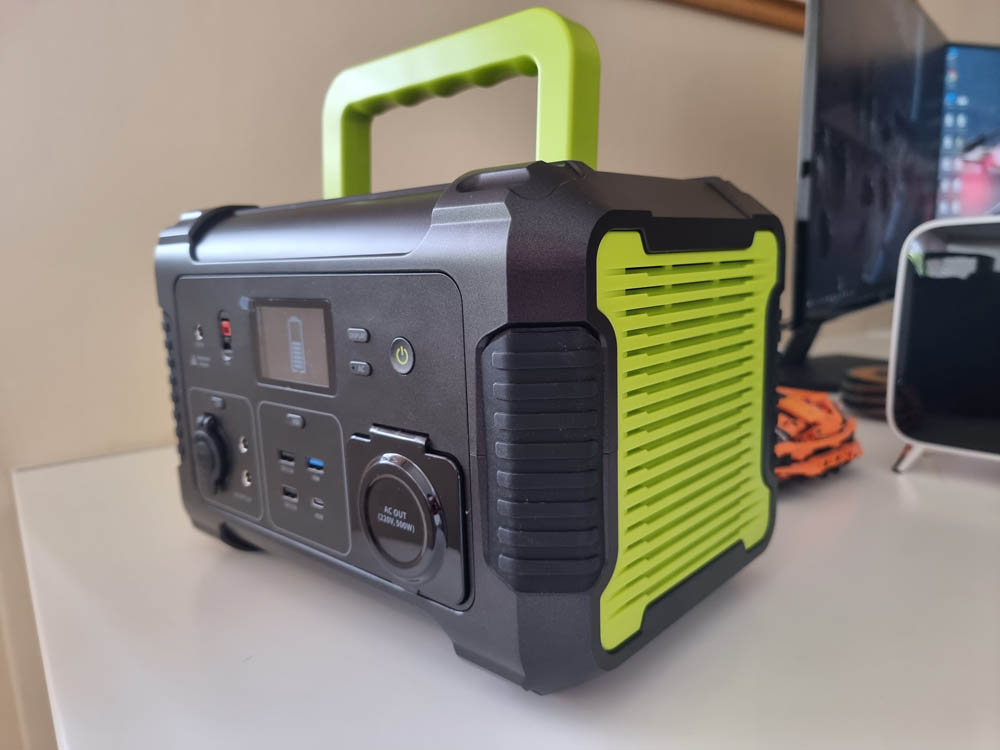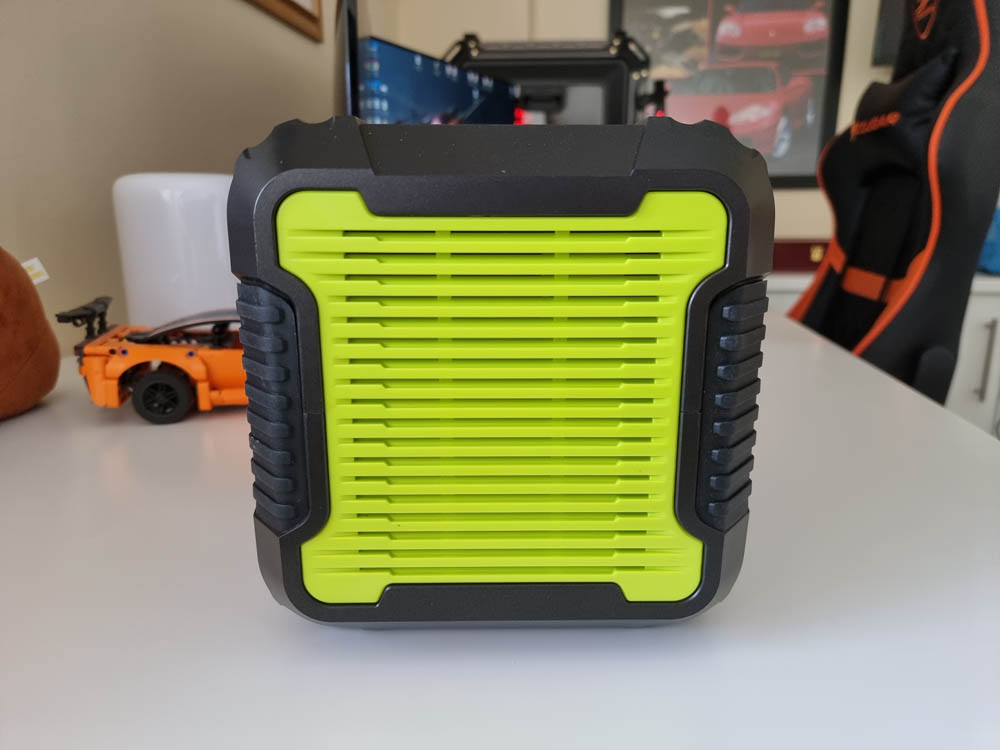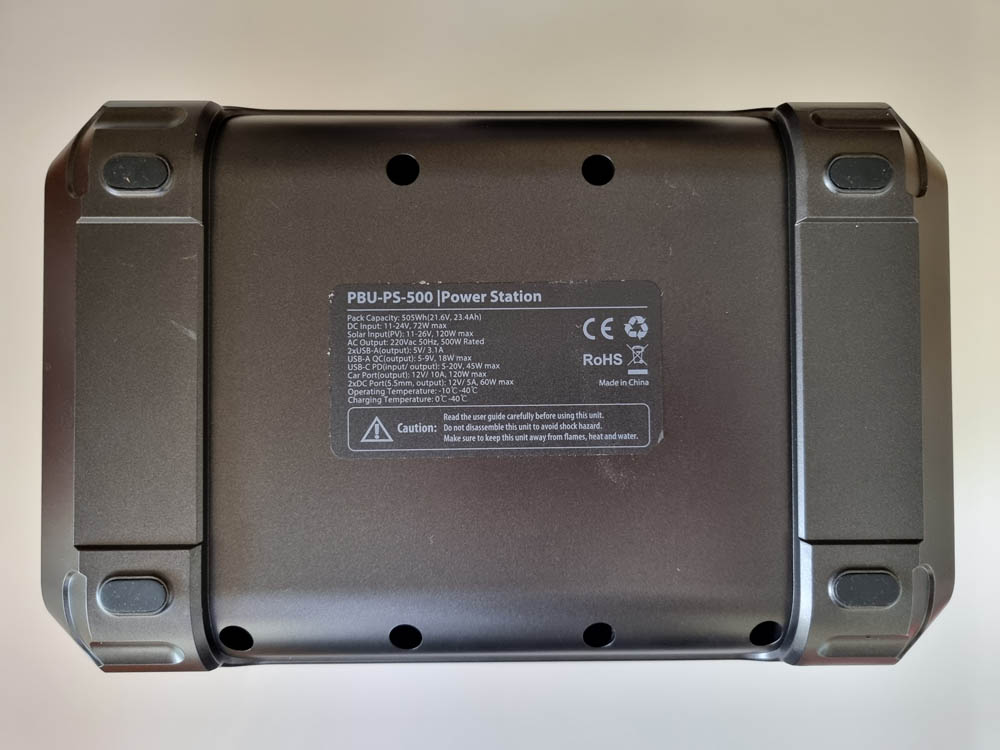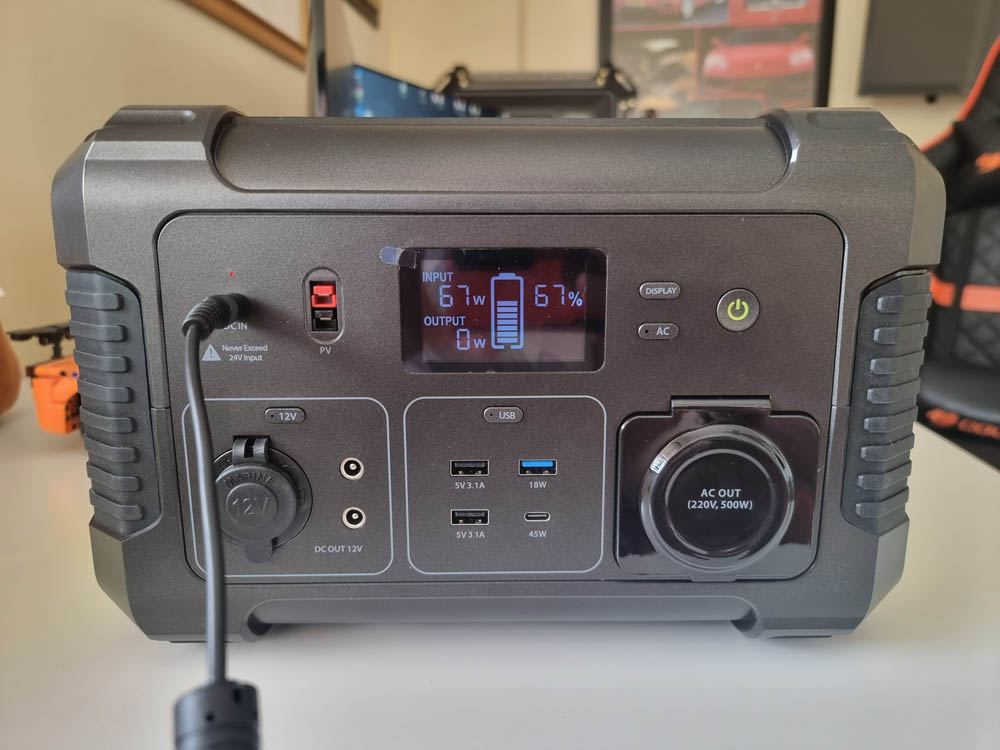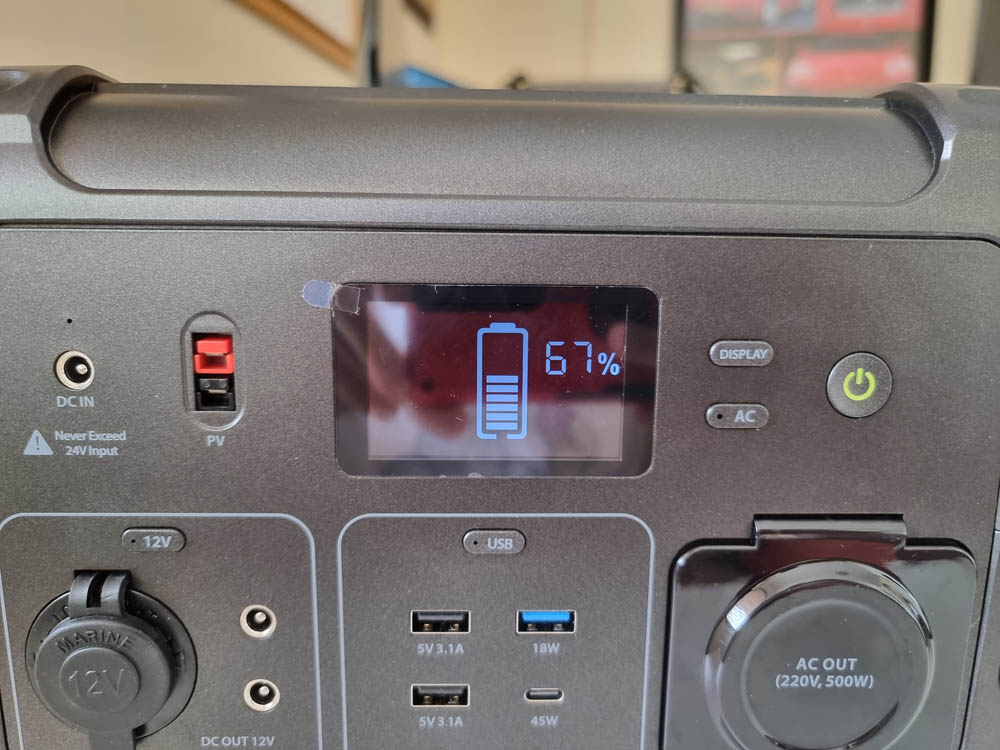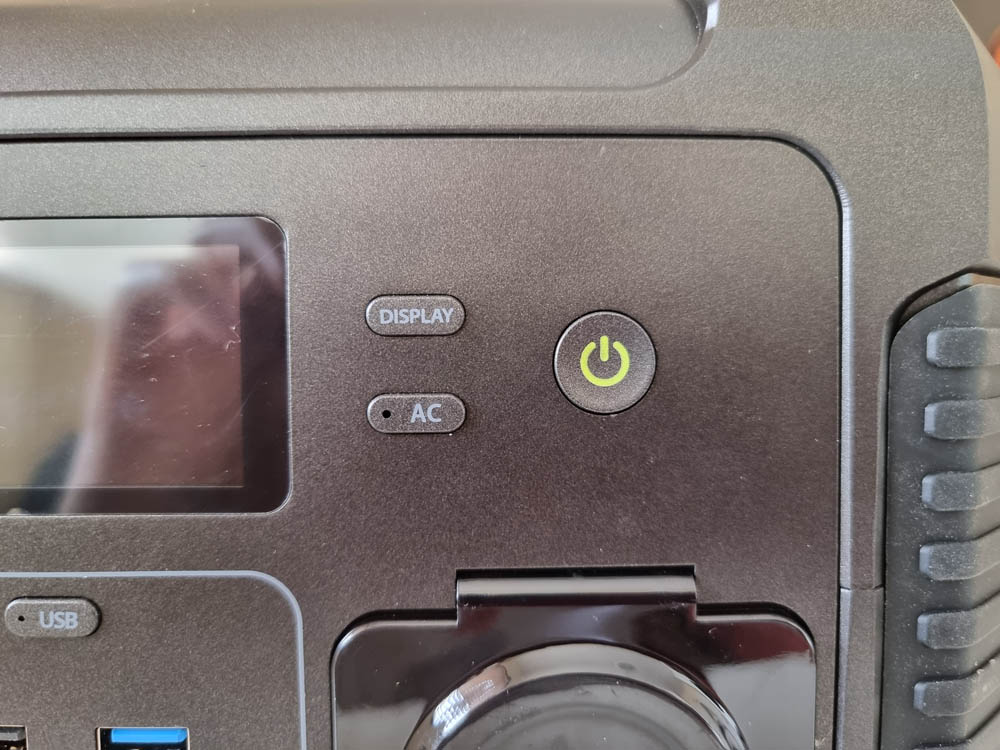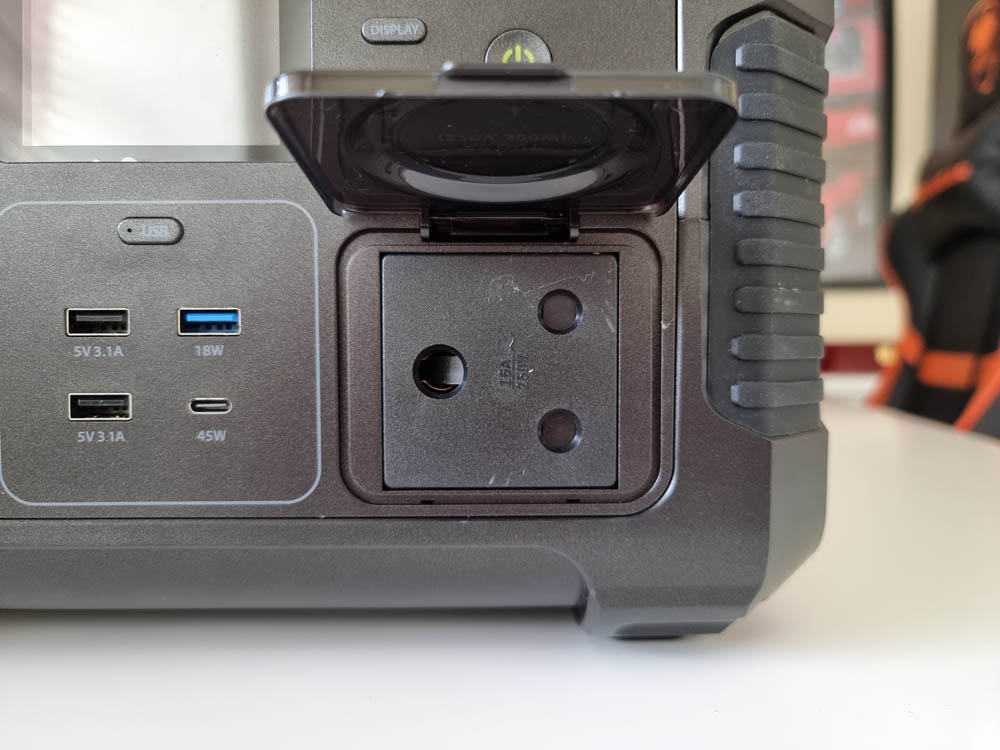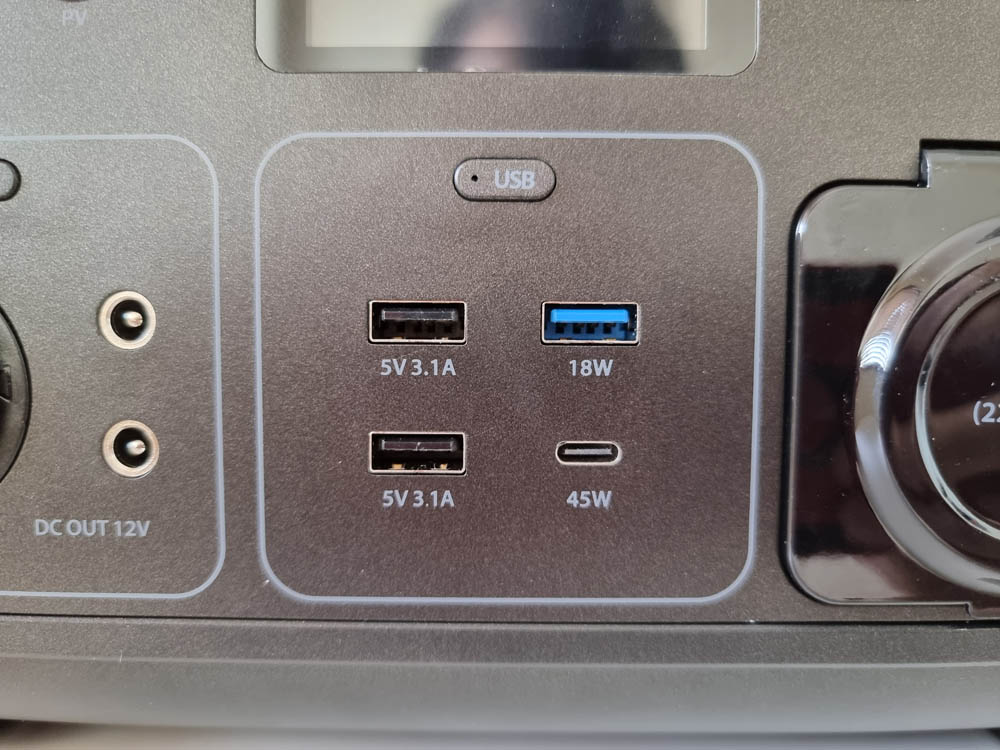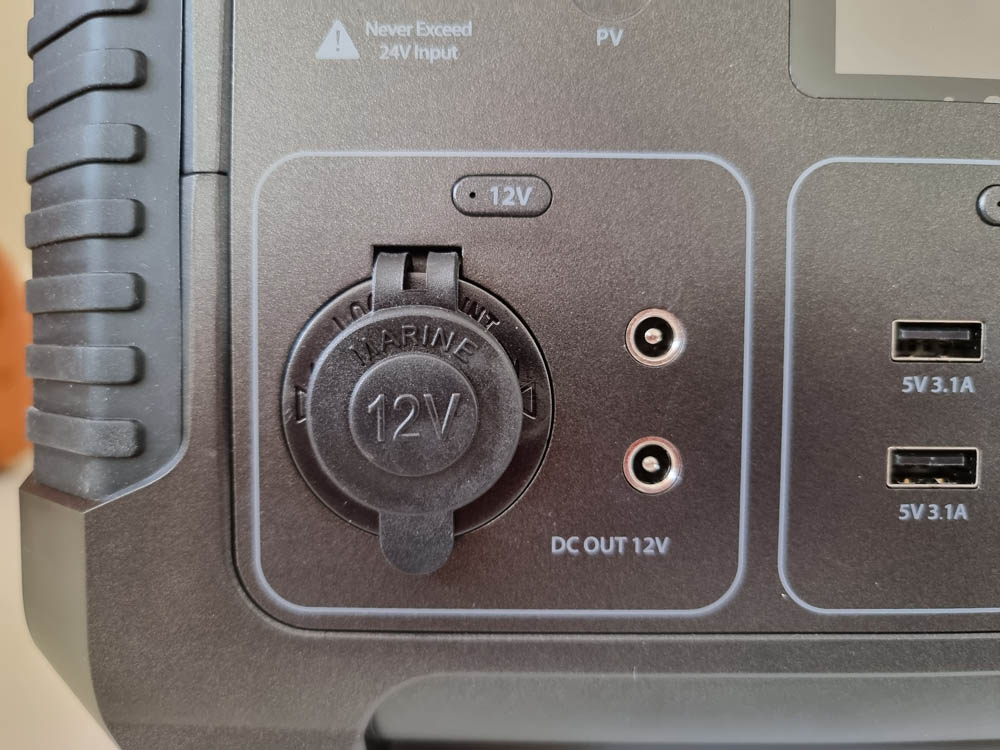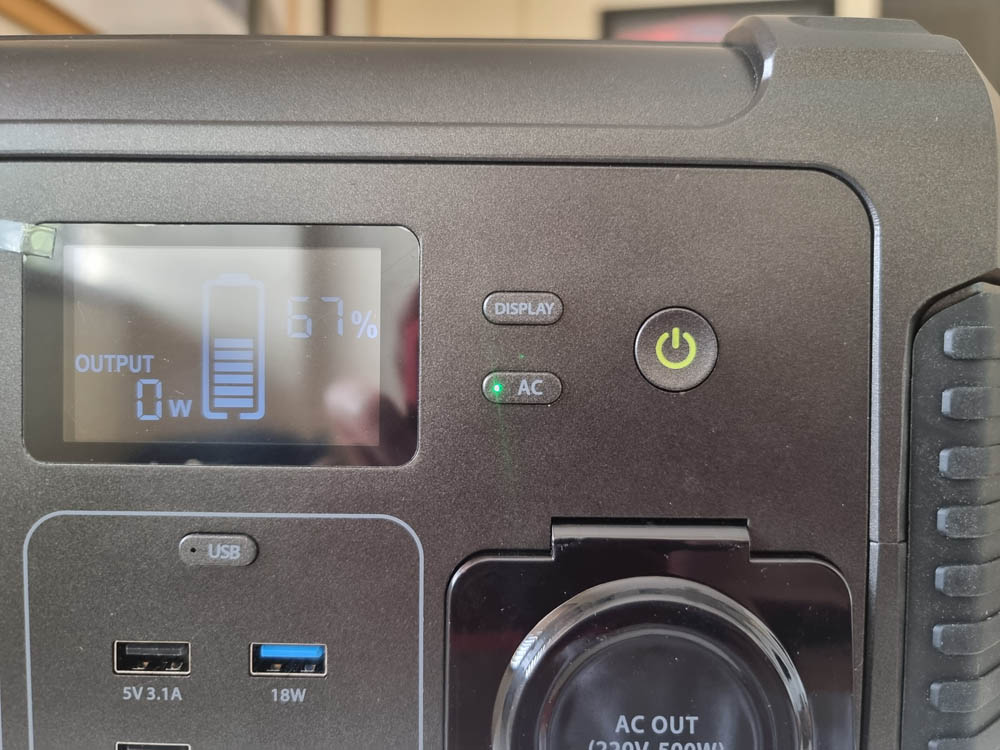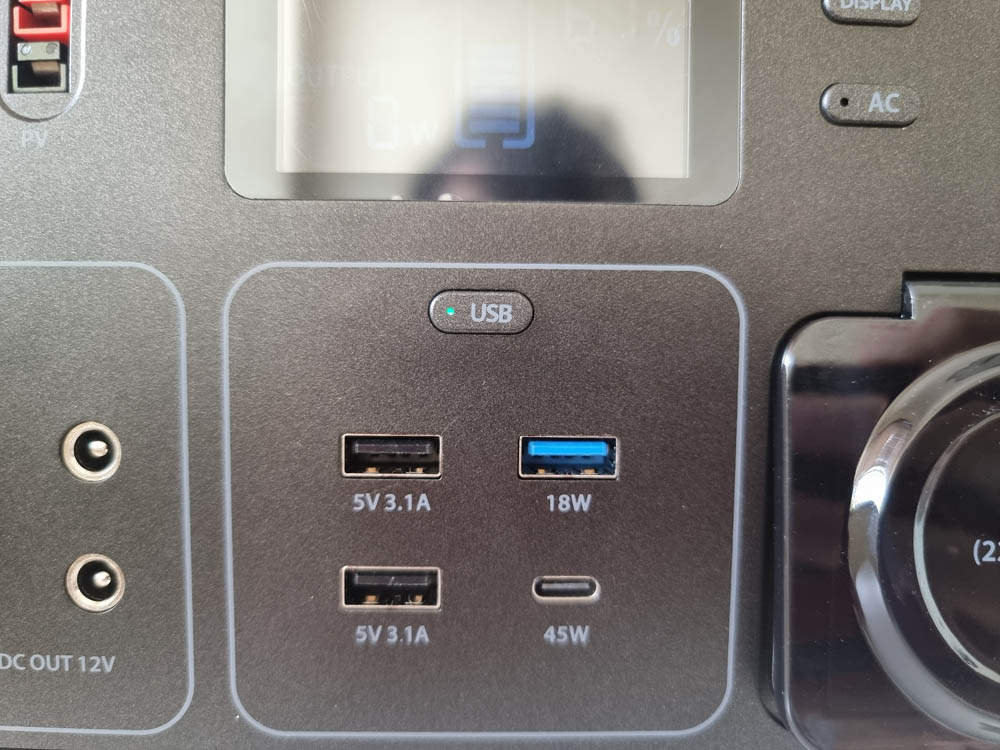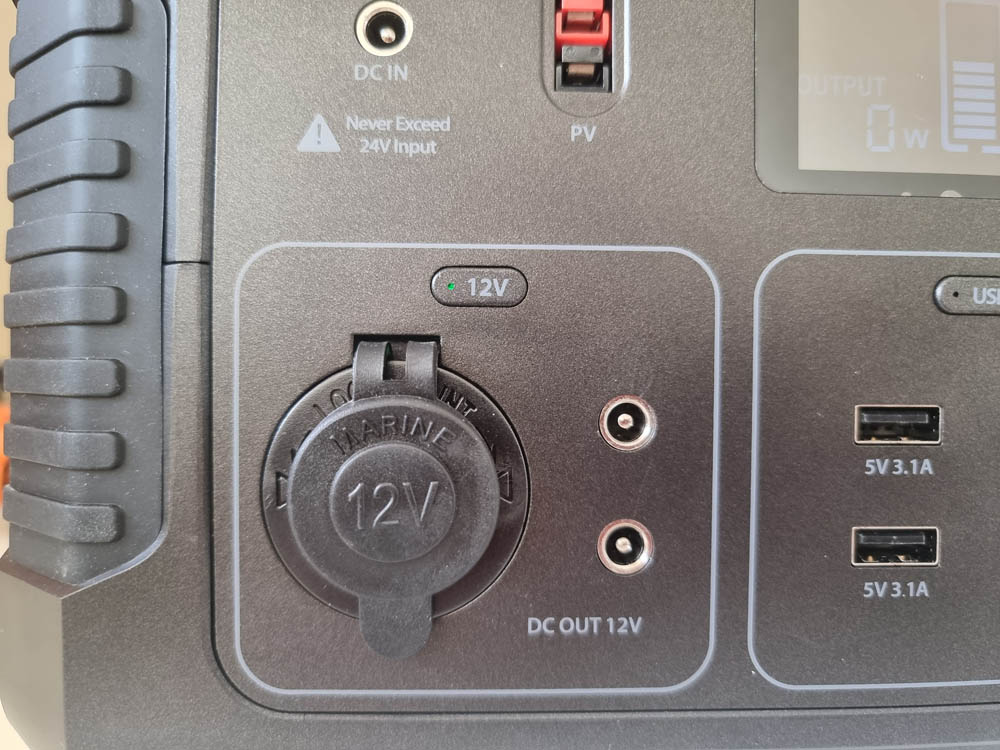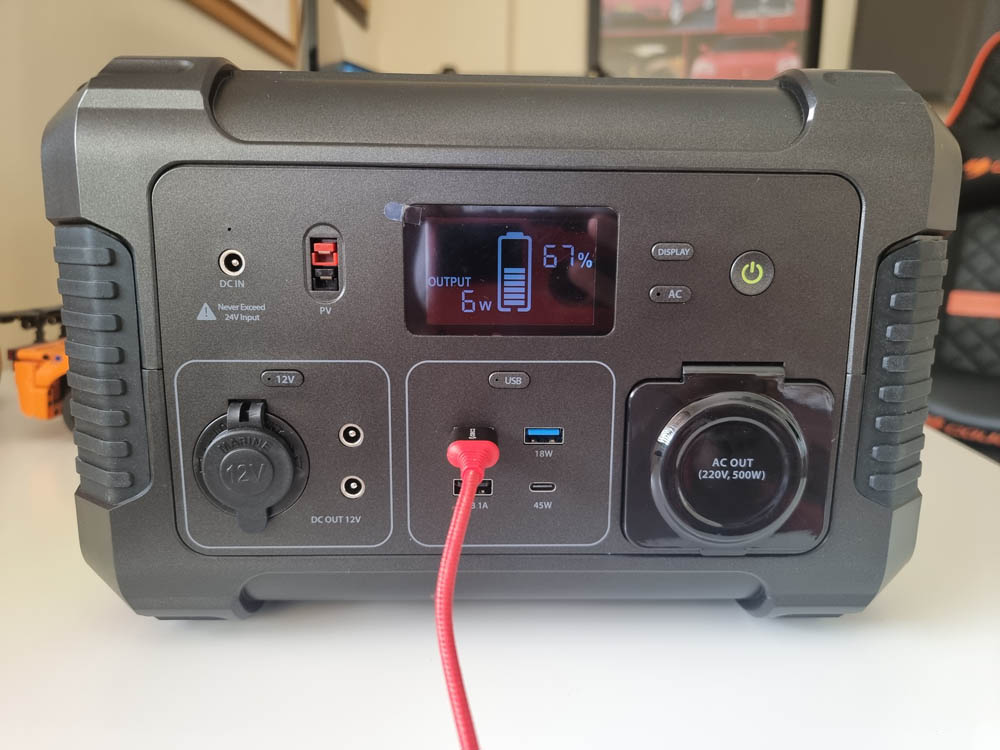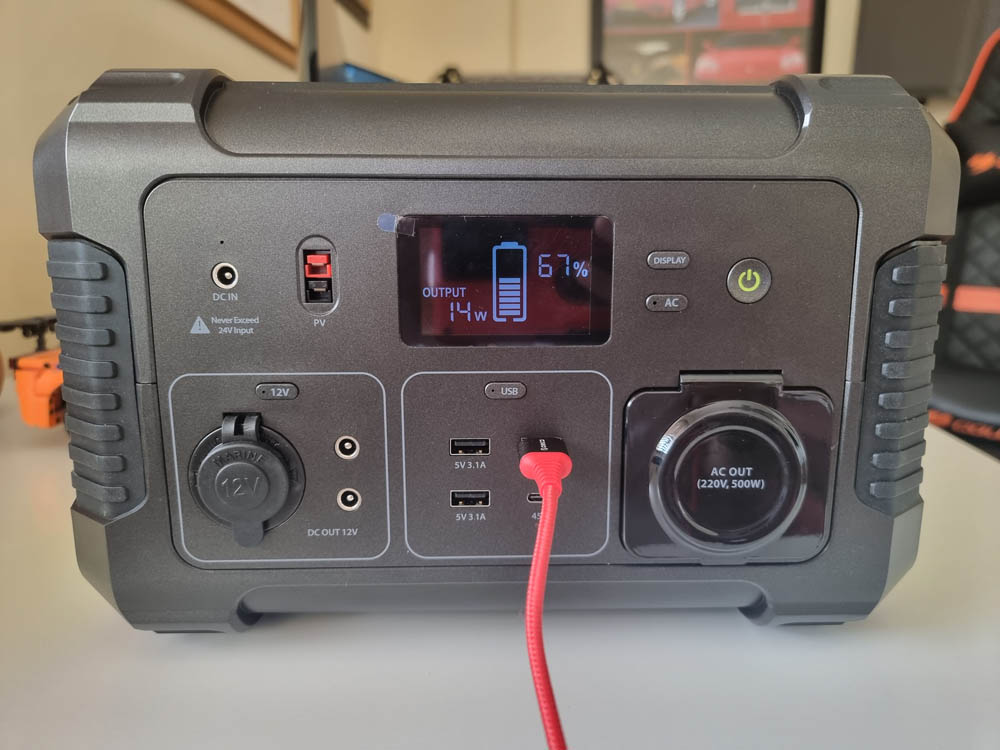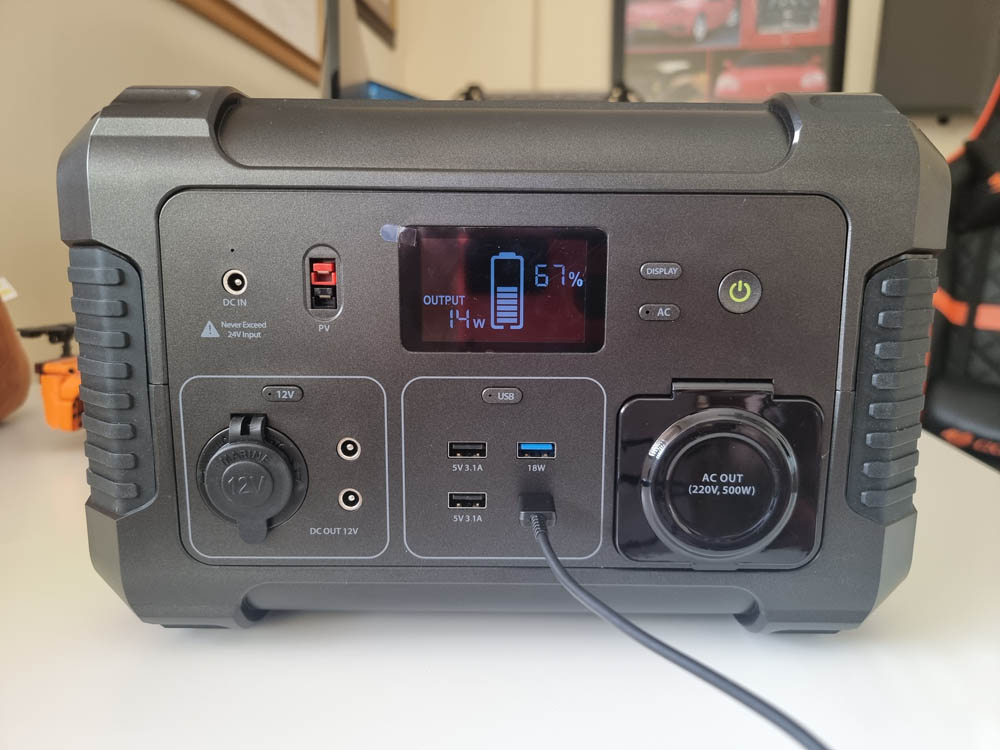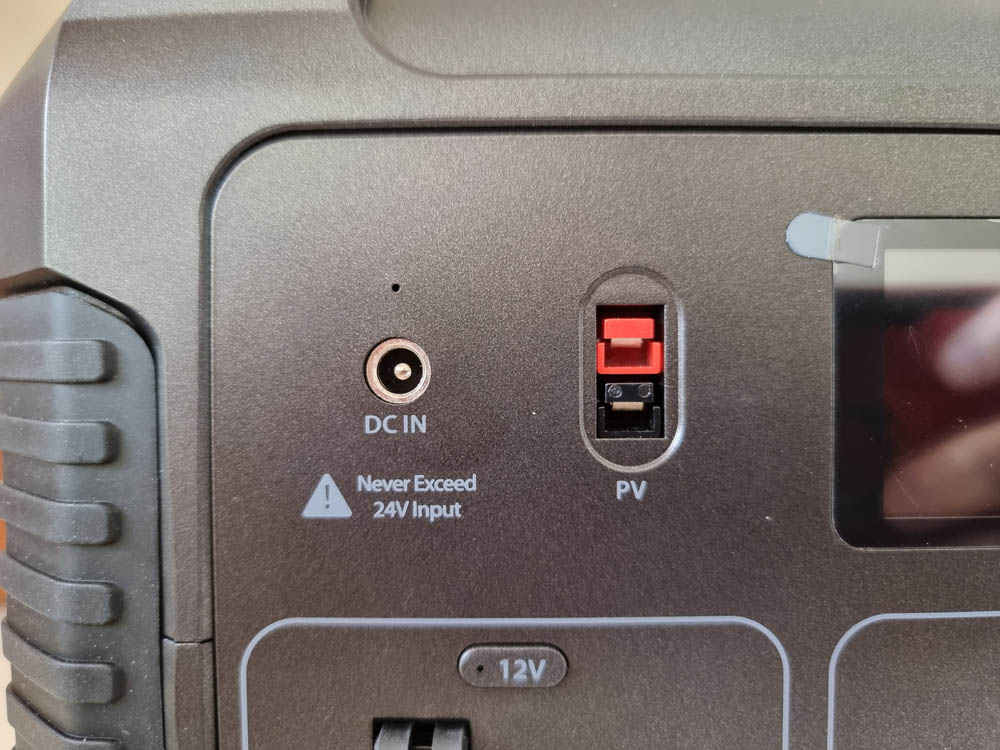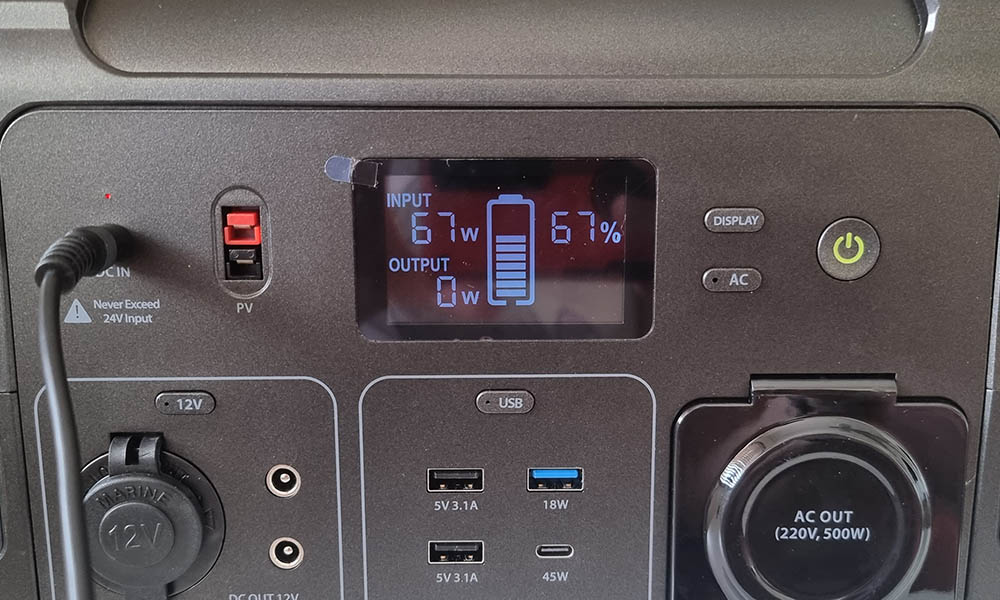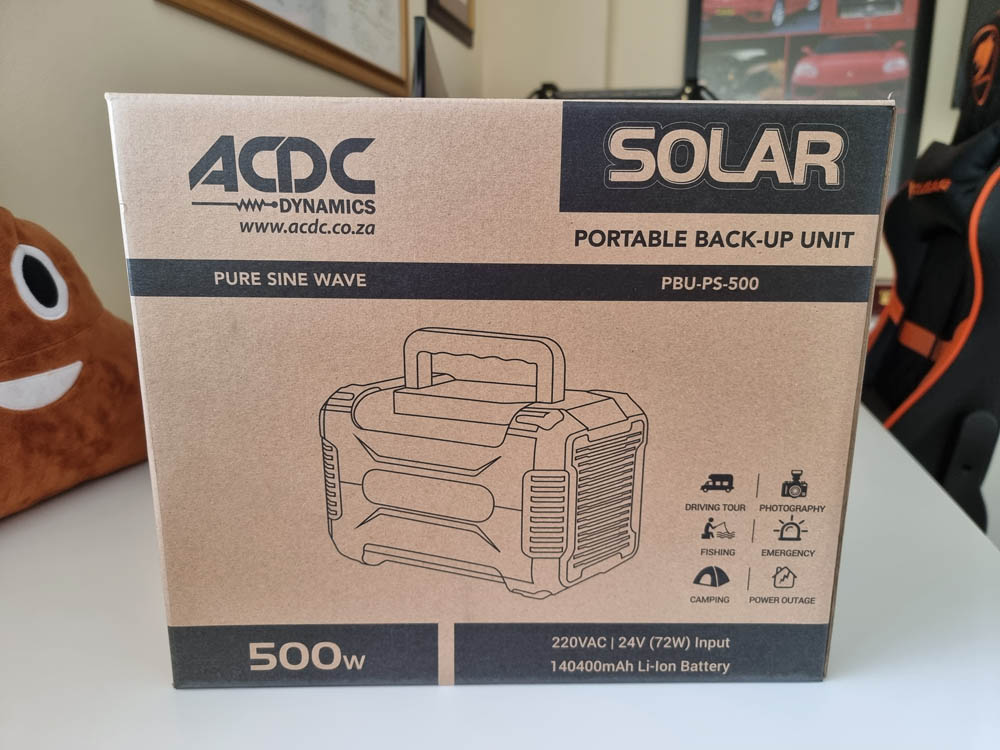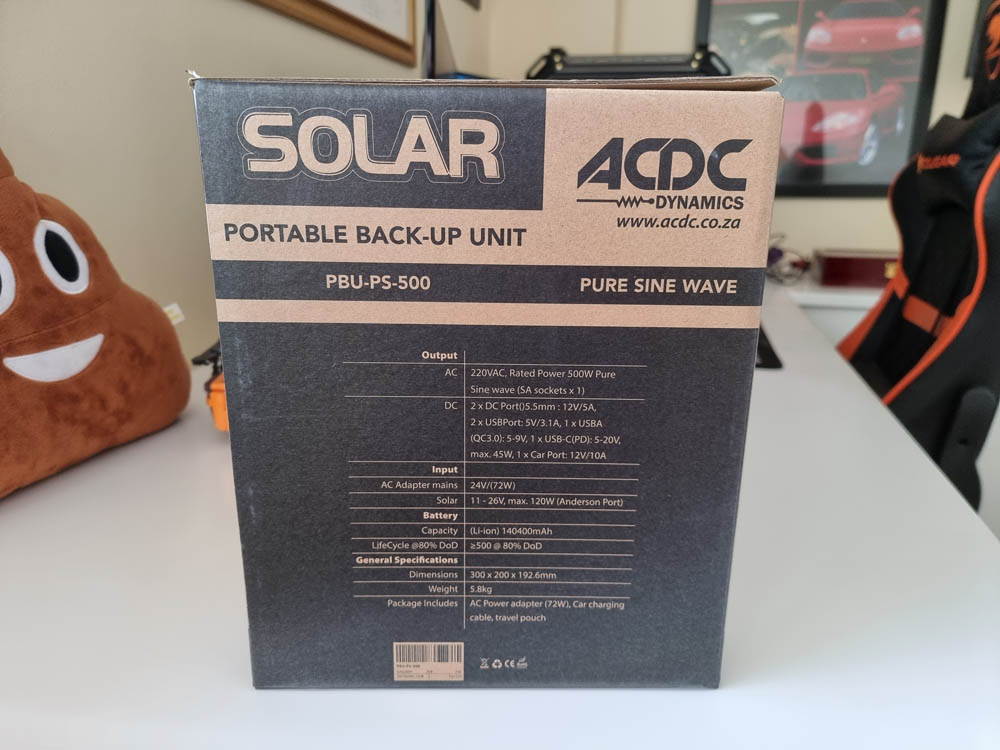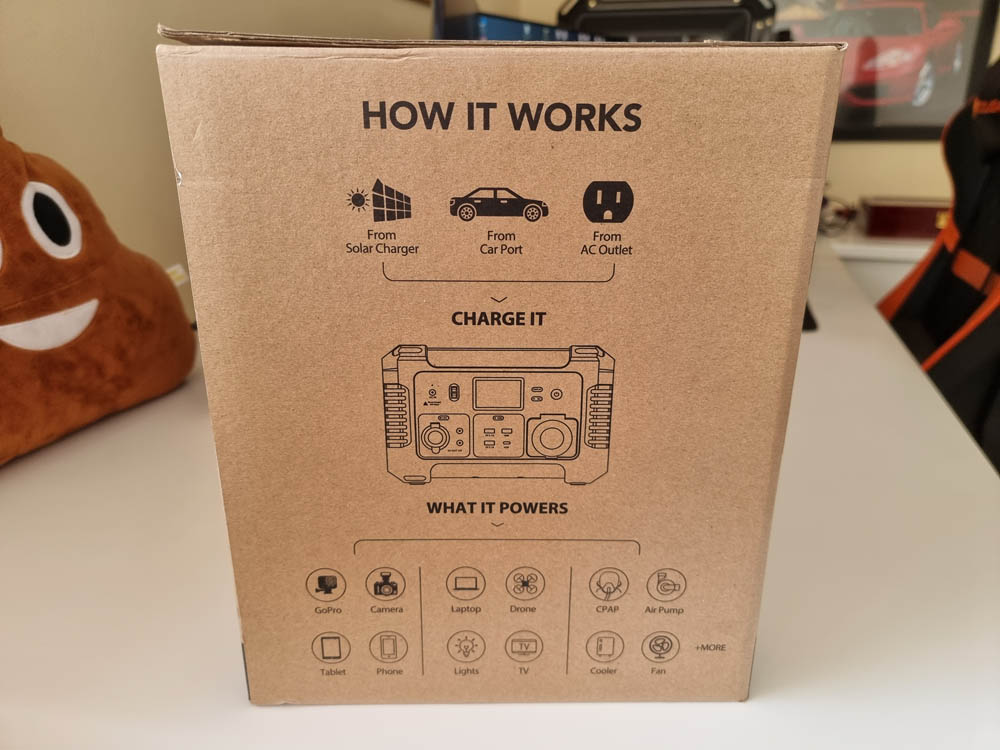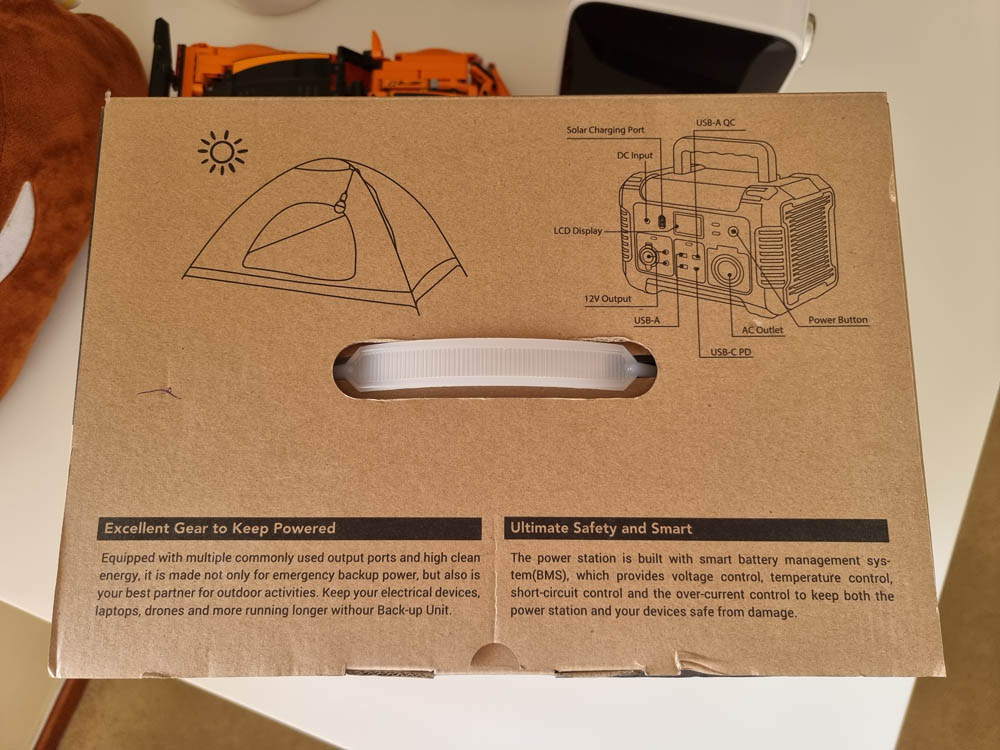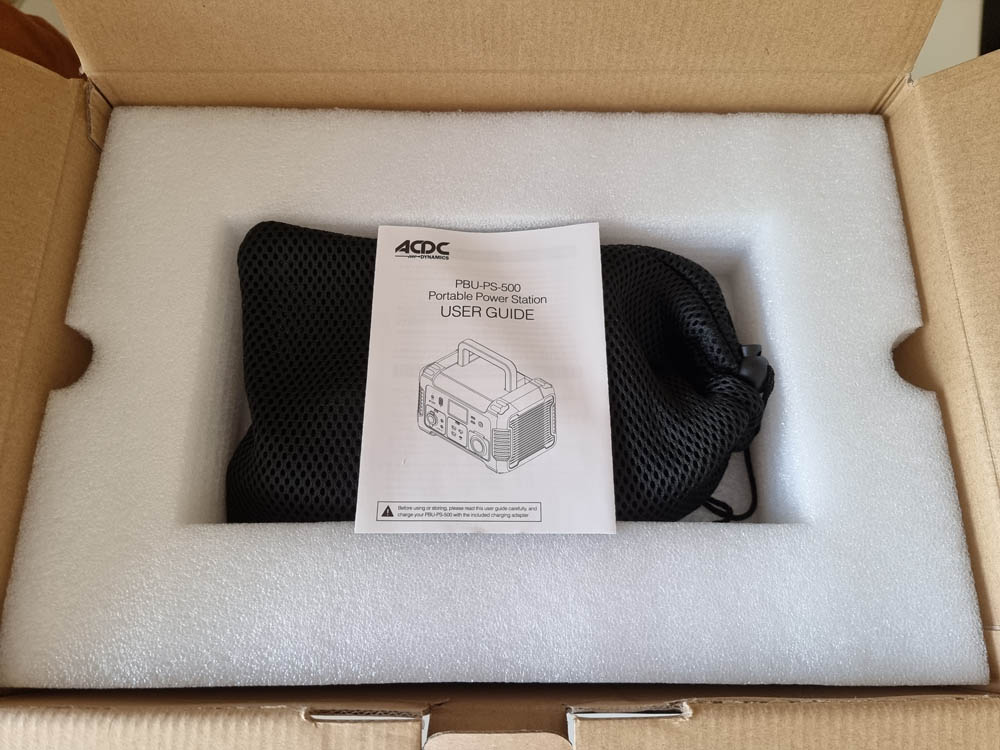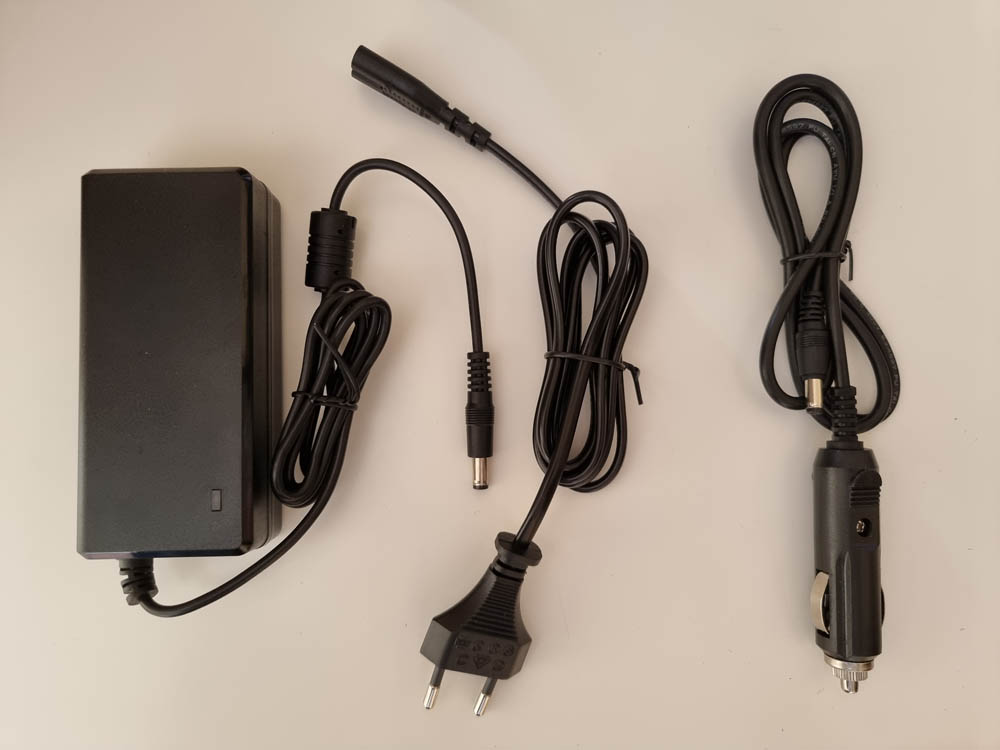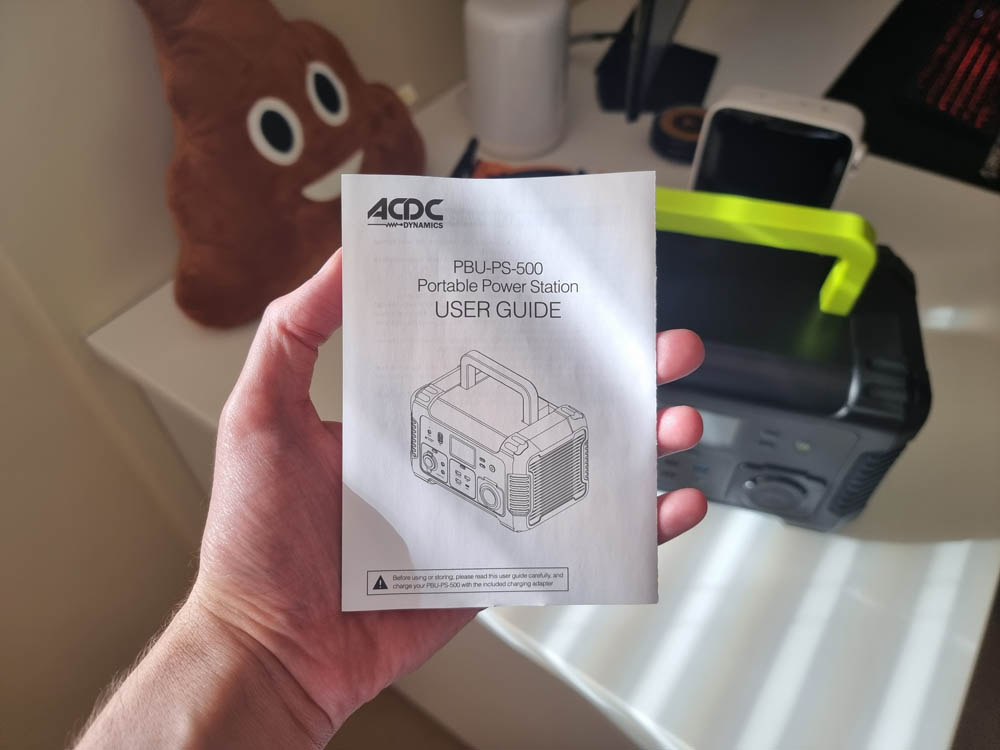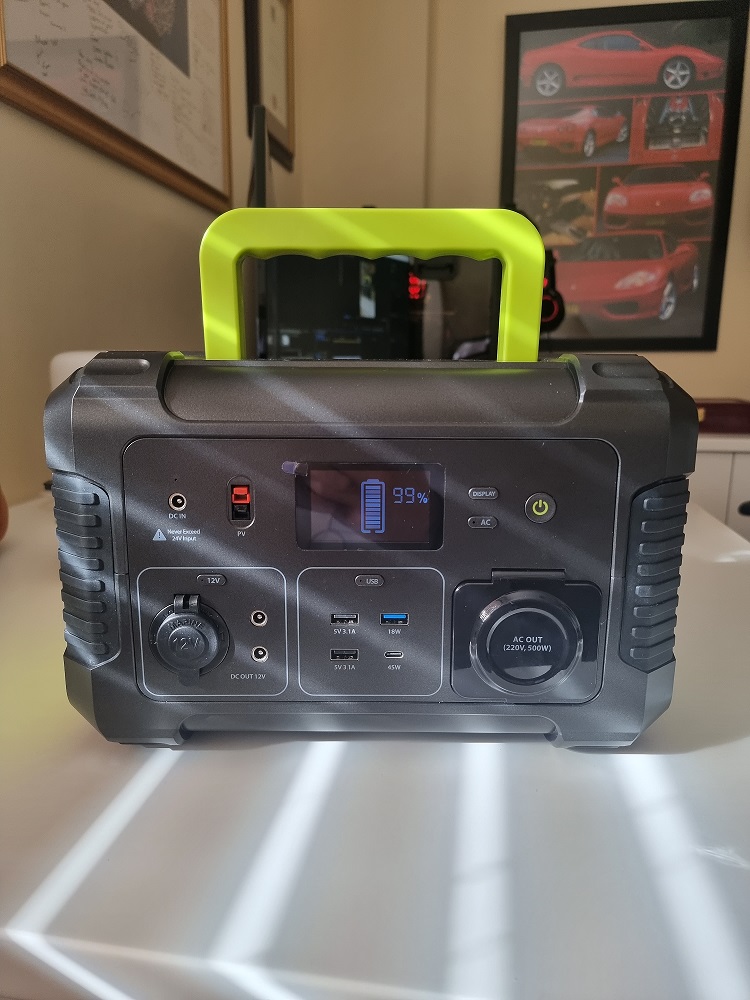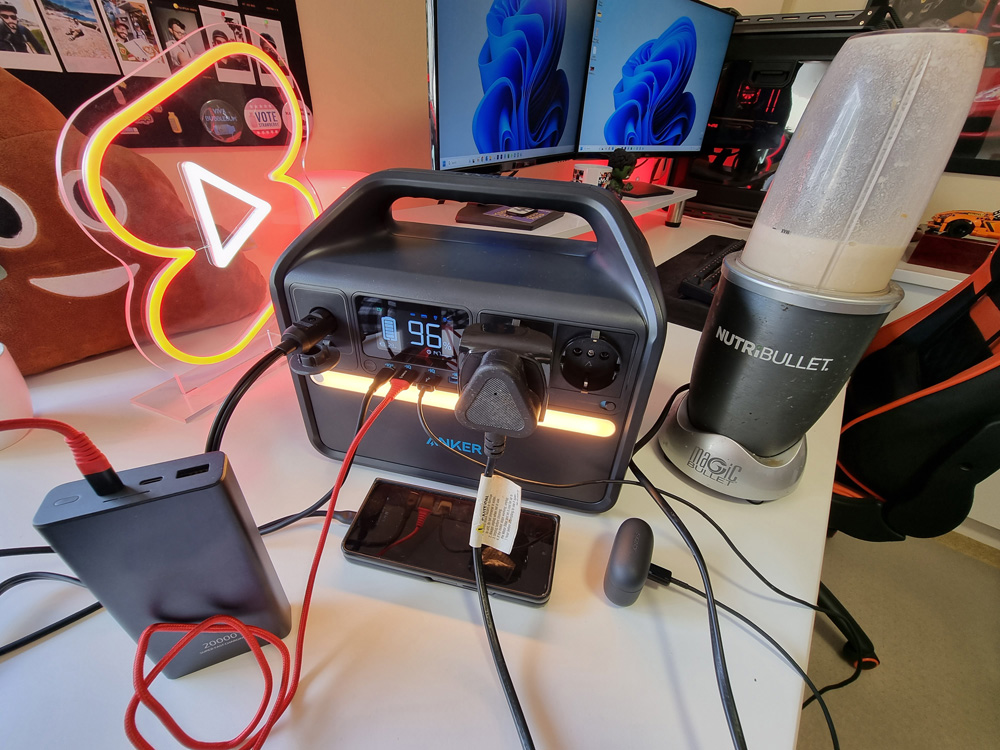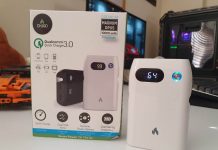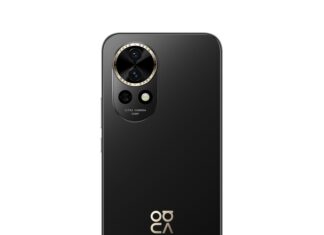Having a backup plan when the power goes off, thanks to load shedding in South Africa, is vital. ACDC Dynamics and ACDC Express recently launched a new store in Cape Town. At the launch, I was gifted an ACDC Portable Back-Up Unit, which will certainly be useful during load shedding. ACDC Dynamics and ACDC Express is your one-stop shop for everything electrical, direct to the public. Let’s take a closer look at the portable power station and how it works.
Design:
The ACDC Portable Back-Up Unit (Also known as the PBU-PS-500) is a portable battery that can be used to power a range of different products, as long as the max wattage of these products does not exceed 500W. This can range from phones, laptops, televisions, lights, fans and even fridges. The unit has a 140400 mAh Li-Ion battery that is made up of an array of cylindrical 18650 lithium battery cells with a high energy density. The unit has a built-in inverter that converts DC to AC, when powering devices via the AC port.
The ACDC Portable Back-Up Unit is made of hard plastic, with vents on the side, rubber on the corners, rubber feet underneath and a handle for carrying. The unit weighs 5.8kg but is compact in size and easy to move around.
On the front of the unit, you will find the LCD display, which displays the battery level as well as the input and output wattage.
The display can be turned on and off with its own dedicated button. Next to this is the power button, which is pressed for 2 seconds to power on/off the unit.
There is an AC Out port, which can power units up to 220V, 500W. You get a range of USB ports made up of two 5V USB ports, an 18W USB port and a USB Type C port. Then lastly you have the 12V port and two 12V DC out ports.
There are dedicated power buttons to turn on the AC, USB and 12V ports. When each button is pressed, the light will turn green, to let you know that power is being supplied to the ports. Each of the ports has its own max output capacity which is stated in the user guide. If this light goes red, it means you have plugged in something that is overloading the unit. To get optimum use of the unit, it is recommended to turn off ports that aren’t being used.
Performance:
I tested out the performance of the unit when charging my phone. Plugging into the 5V USB and the 18W USB ports, I noticed that my phone switched from normal charging to fast charging, which makes sense as 18W is fast charging. I then switched over to the USB Type C port and I still received fast charging but at an even faster rate, meaning I saved some minutes to get my phone to 100%.
For safety purposes, the unit has a built-in smart battery management system, which provides voltage control, temperature control, short circuit control and over current control, to keep both the back-up unit and your devices safe from damage. If a device that you have plugged in is drawing too much power, the LED next to the appropriate button will turn red.
Charging:
There are three ways to charge the unit. You can either charge from a wall outlet using the AC Charging Adapter, by Solar, or by using the 12V port in your vehicle. The quickest way to charge the unit is going to either be by AC or Solar. When charging, the cells in the battery icon on the display will flash as they fill up and you will know that the battery is fully charged when the battery icon is full and the percentage reads 100%.
Straight out of the box, it took roughly three hours to get from 67% to 100%. It is best to charge the unit when the battery is at 20% or below, so that you don’t run the battery to 0%, as this is not good for batteries. I would assume that it takes about 8 hours to charge from 20% to 100%.
The unit can be charged around 500 cycles to 80% capacity. If not being used often, the unit should be charged every 3 to 6 months.
When the unit is charging, the USB and DC 12V ports can still be used to charge/power items but the AC output cannot be used.
What is in the box:
The unit comes in a cardboard box with Polystyrene padding. You will find the portable battery unit, and then a net material bag that contains the AC charging adapter and the 12V car charger. There is also a handy user guide, which provides all the info that you need to know.
Price:
The ACDC Portable Back-Up unit retails for R7610. This is not far off from the cost of my battery and inverter that I use to power my computer setup when there is load shedding. While the unit that sits under my desk, does a good job, it is really heavy, and I cannot move it around, even though it is on wheels. So the fact that the unit from ACDC is portable and easily moveable, makes it a winner when comparing the costs.
Verdict:
With load shedding making our lives difficult when it comes to preparing meals, getting work done or catching up on the latest series on Netflix, the ACDC Portable Back-Up unit really does save the day. You can easily power a computer, charge phones and run some lights, at home, at a friend or on the go.
Visit the ACDC Dynamics and ACDC Express stores to check out the ACDC Portable Back-Up Unit, as well as their other products! Read about the ACDC Dynamics and ACDC Express store launch.


